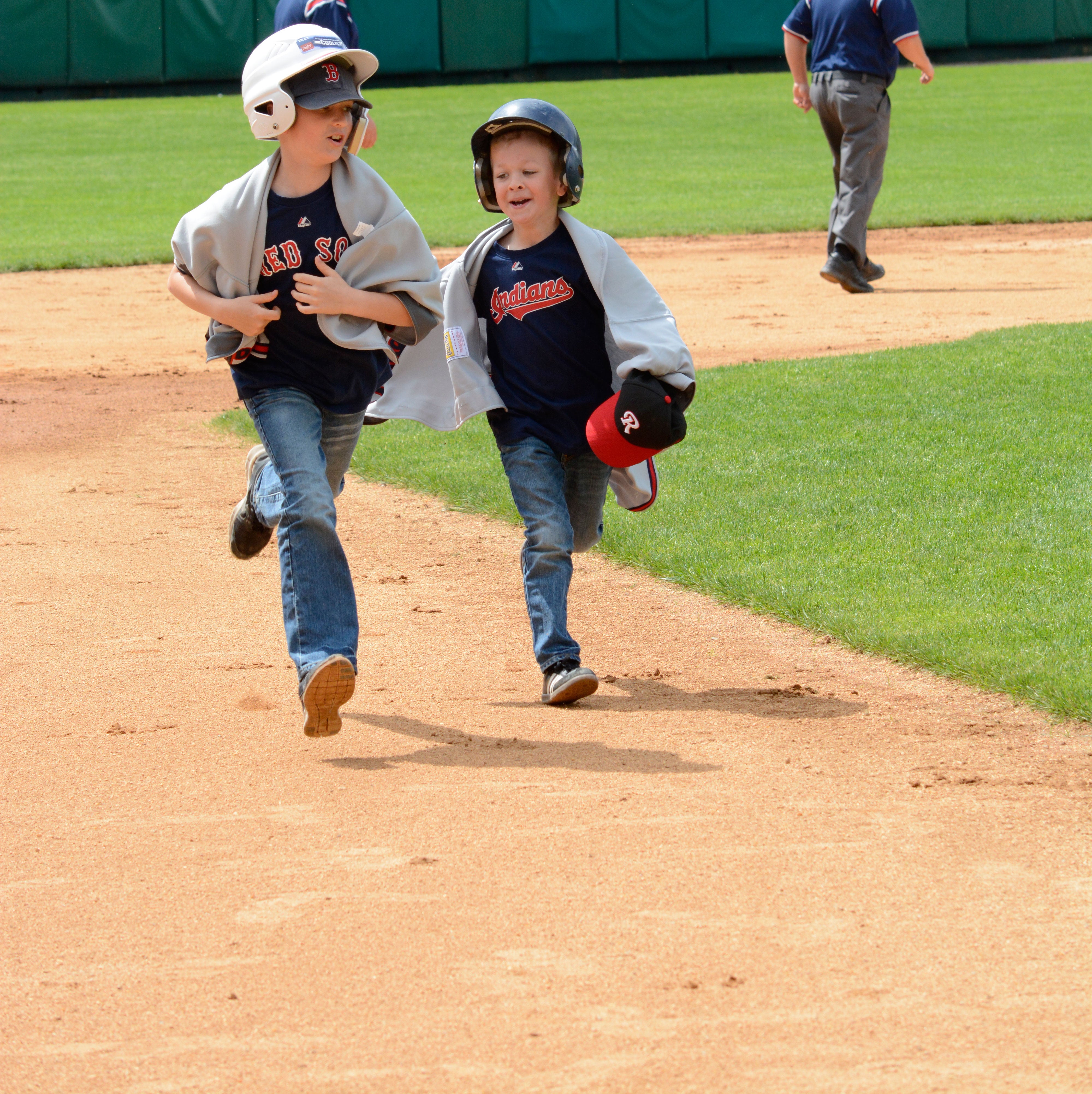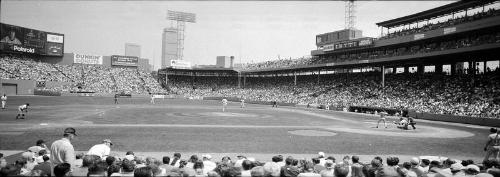The shallow left field fence, the deep right field, the deep center field, the short porch in left. Did I think about those things when I was on the mound? Every minute.
Bill Lee, Major League Pitcher 1969-1982

GEOMETRY: CIRCLING THE BASES
One of the great features of baseball stadiums and fields is that no two are alike. Outfielders need to know the dimensions and special characteristics of the fields in which they play to help them decide how to field the ball - do they play the fly ball off the wall or try to jump and catch it for an out? Spend time on a playing field full of shapes, allowing students to figure out area, perimeter, diameter, and other aspects of geometry while learning about some of the "angles" of playing baseball.
THEMATIC UNIT OBJECTIVE
- Examine how everyday geometric concepts, such as circumference, area, perimeter, diameter, etc., apply to baseball and the real world.
- Analyze characteristics of the baseball playing field and interpret data in terms of fundamental geometric operations.
- Understand the characteristics of shapes in baseball and how they can be applied using basic geometric principles.
ROOKIE (GRADES 3-5)
LESSON 1 (PRE-VISIT): WHAT’S YOUR ANGLE?
Students are introduced to the elements of angles: points, line segments, and vertices. Students also learn to measure angles using protractors and classify angles.
LESSON 2 (PRE-VISIT): A DIAMOND FILLED WITH SHAPES
During this lesson students discover the different types of polygons. Students will differentiate between types as well as learn the specific names for polygons.
LESSON 3 (PRE-VISIT): PERIMETER & AREA
In this lesson, students are guided through the process of determining the perimeters and areas of various 2-dimensional objects.
LESSON 4: ON-SITE VISIT OR VIDEO CONFERENCE
Students will work with museum teachers to reinforce concepts and ideas introduced in the classroom.
Book your:
LESSON 5 (POST-VISIT): CIRCLING THE BASES
Students review angles, polygons, and the formulas for perimeter and area.
INTERMEDIATE (GRADES 6-8)
LESSON 1 (PRE-VISIT): BALLPARK FIGURES – PART 1
Students review how to measure and calculate the perimeter and area of rectangles.
LESSON 2 (PRE-VISIT): BALLPARK FIGURES – PART 2
During this lesson students review formulas for the calculation of circumference and area.
LESSON 3 (PRE-VISIT): BALLPARK FIGURES – PART 3
In this lesson, students are guided through the process of using the Pythagorean Theorem.
LESSON 4: ON-SITE VISIT OR VIDEO CONFERENCE
Students will work with museum teachers to reinforce concepts and ideas introduced in the classroom.
Book your:
COMMON CORE STANDARDS
CCSS MATH CONTENT: 3.G.A.1, 3.MD.C.5/6/7, 3.MD.D.8, 4.G.A.1/2, 4.MD.A.3, 4.MD.C.5/6, 5.G.B.3
EXPLORE OUR CURRICULUM
The Museum currently offers 15 baseball-themed curriculum components that provide interactive and meaningful learning engagement.
PLAN A VIRTUAL FIELD TRIP
The next best thing to visiting the National Baseball Hall of Fame Museum is participating in a Virtual Field Trip. The Museum's award winning programs bring the wonders of Cooperstown to the classroom.
PLAN A FIELD TRIP
The National Baseball Hall of Fame and Museum proudly presents fun-filled, content rich experiences for students from grades 3 to 12. Our field trips are all aligned with National Learning Standards.
EXPLORE OUR CURRICULUM
The Museum currently offers 15 baseball-themed curriculum components that provide interactive and meaningful learning engagement.
PLAN A VIRTUAL FIELD TRIP
The next best thing to visiting the National Baseball Hall of Fame Museum is participating in a Virtual Field Trip. The Museum's award winning programs bring the wonders of Cooperstown to the classroom.
PLAN A FIELD TRIP
The National Baseball Hall of Fame and Museum proudly presents fun-filled, content rich experiences for students from grades 3 to 12. Our field trips are all aligned with National Learning Standards.

